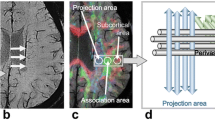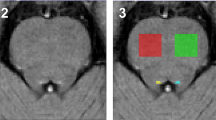Abstract.
Characteristic patterns of regional cerebral blood flow (rCBF) reduction, as detected by technetium-99m hexamethylpropylene amine oxime (99mTc-HMPAO) single-photon emission tomography (SPET), may help clinicians in differentiating patients with frontotemporal dementia (FTD) from those with Alzheimer's disease (AD). However, in some cases these patients may share common rCBF abnormalities and the visual analysis and/or the region of interest (ROI) approach may not sensitively detect more localised focal changes that could be more specific for each pathology. Recently, automated voxel-by-voxel statistical analysis of perfusion brain maps has been applied to SPET images. This method has the advantage of including the rCBF information for the whole brain for statistical analysis without any a priori hypothesis regarding the regions possibly involved. This could result in a better characterisation of rCBF differences in brain regions while also reducing the operator's subjectivity and the time required for data analysis. The purpose of this study was to apply such a technique to highlight the specific brain areas showing a relative functional involvement in FTD and AD. Thus, we compared the relative rCBF patterns obtained in eight FTD patients with those obtained in 21 AD patients using 99mTc-HMPAO SPET and statistical parametric mapping (SPM). When FTD patients were compared with AD patients, relatively lower rCBF was observed in right medial frontal cortex (BA 8, 9, 10), right anterior cingulate cortex (BA 32), right temporal cortex (BA 21/22), right orbitofrontal cortex (BA 11) and ventrolateral prefrontal cortex (BA 47); in BA 47 the reduction was evident bilaterally but was more marked on the right side. On the other hand, when AD patients were compared with FTD patients, a significant relative rCBF decrease was found in the bilateral superior parietal cortex (BA 7); this decrease was more extensive on the left side, where it also included the inferior parietal (BA 40), superior occipital (BA 19) and temporo-occipital regions (BA 39, 19). The results of this study confirm the preferential involvement of the frontotemporal regions in FTD patients and of the temporoparietal regions in AD patients. Furthermore, they highlight the networks that are more specifically impaired in these disorders and that could be implicated in the emotional-behavioural and cognitive disturbances that characterise FTD and AD respectively.
Similar content being viewed by others
Author information
Authors and Affiliations
Additional information
Received 26 January and in revised form 5 May 2002
Electronic Publication
Rights and permissions
About this article
Cite this article
Varrone, A., Pappatà, S., Caracò, C. et al. Voxel-based comparison of rCBF SPET images in frontotemporal dementia and Alzheimer's disease highlights the involvement of different cortical networks. Eur J Nucl Med 29, 1447–1454 (2002). https://doi.org/10.1007/s00259-002-0883-5
Issue Date:
DOI: https://doi.org/10.1007/s00259-002-0883-5




